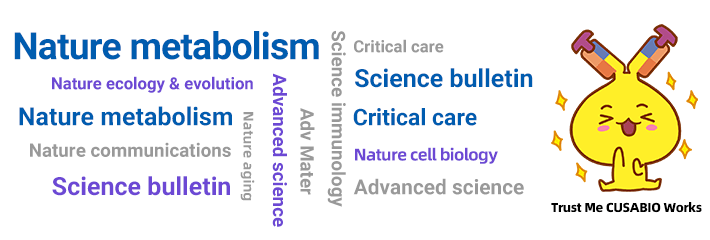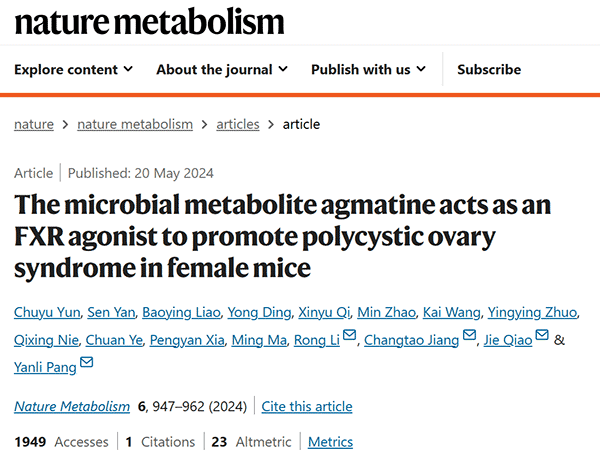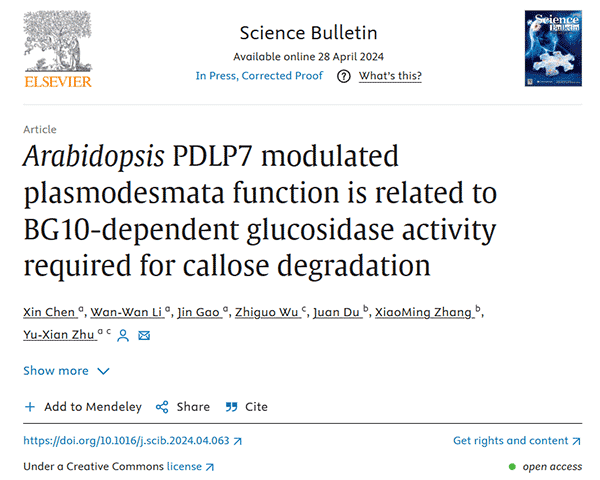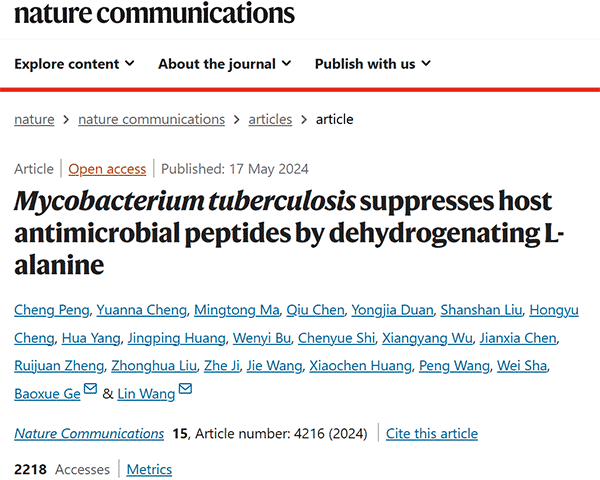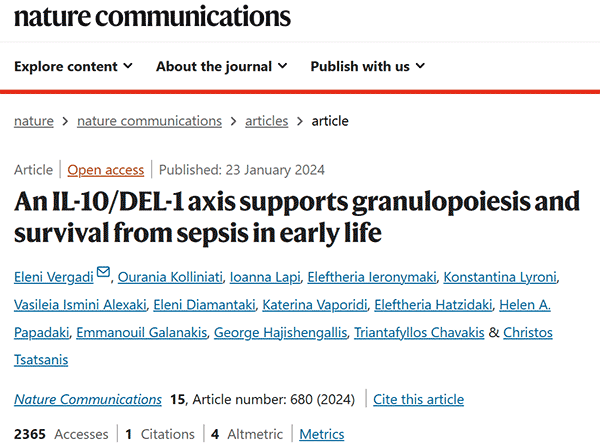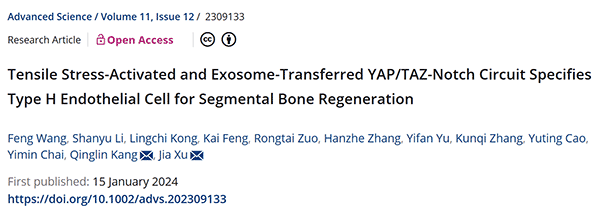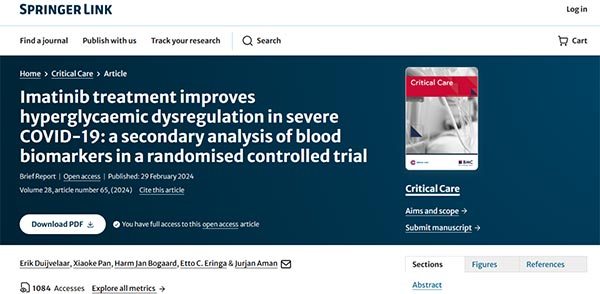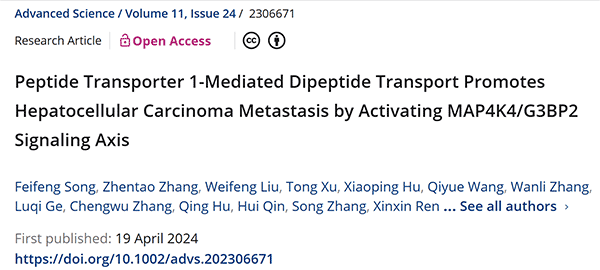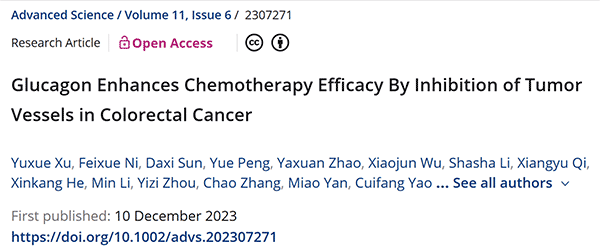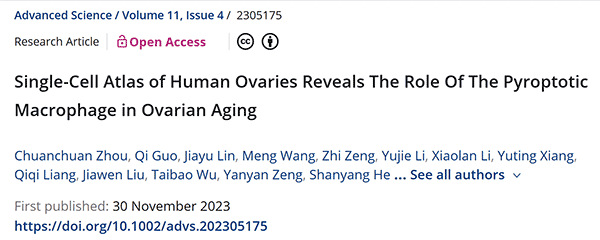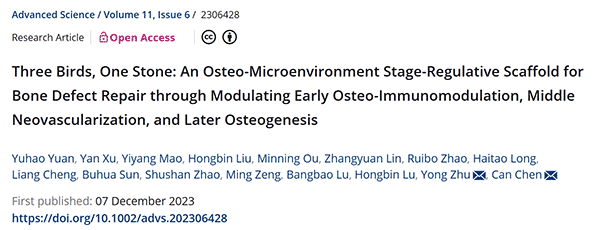Thank you for your continued support of CUSABIO! In the second quarter of 2024, articles related to CUSABIO products were published in excess of 800, with a cumulative impact factor exceeding 4000. The total number of articles has reached 23000. Thank you for choosing CUSABIO research products during your scientific research journey. Thank you again for your trust and support. We will continue to work hard to provide you with better products and services. Now let's share our wonderful research results.
CUSABIO Quarterly Citations Review
01 The microbial metabolite agmatine acts as an FXR agonist to promote polycystic ovary syndrome in female mice
Impact Factor: 20.8
Journal Name: Nature metabolism
CUSABIO Citation Product:
CSB-E05071m: Mouse Insulin, INS ELISA Kit
CSB-E12009h: Human growth differentiation factor 15(GDF15)ELISA Kit
CSB-E08484h: Human Glucose dependent insulin releasing polypeptide, GIP ELISA Kit
Research Highlights:
This study uncovers the role of the microbial metabolite arginine in the promotion of polycystic ovary syndrome (PCOS) in mice, indicating that arginine activates the farnesoid X receptor (FXR) pathway, thereby inhibiting the secretion of glucagon-like peptide-1 (GLP-1) in L cells, leading to insulin resistance and ovarian dysfunction. The research demonstrates that the GLP-1 receptor agonist liraglutide and the arginine decarboxylase inhibitor DFMA can ameliorate ovarian dysfunction in a murine PCOS model. These findings suggest that the arginine-FXR-GLP-1 signaling pathway plays a pivotal role in ovarian dysfunction, offering a potential novel target for PCOS therapy.
02 Arabidopsis PDLP7 modulated plasmodesmata function is related to BG10-dependent glucosidase activity required for callose degradation
Impact Factor: 18.9
Journal Name: Science bulletin
CUSABIO Citation Product:
CSB-PA604499XA01DOA: PDLP7 Antibody
Research Highlights:
The research investigates the role of a plasma membrane protein named PDLP7 in Arabidopsis thaliana in modulating the function of plant intercellular channels (plasmodesmata). It reveals that PDLP7 interacts with β-1,3-glucanase BG10 to regulate the degradation of polysaccharides such as callose within the plasmodesmata, thereby affecting the transmission of viruses between plant cells. The study finds that the absence of PDLP7 results in increased plasmodesmal diameter and reduced callose deposition, accelerating viral spread; whereas overexpression of PDLP7 enhances callose deposition, decelerating virus transmission. This discovery provides a new perspective for understanding plant disease resistance and underscores the critical role of PDLP7 in plant cell communication and antiviral defense.
03 Mycobacterium tuberculosis suppresses host antimicrobial peptides by dehydrogenating L-alanine
Impact Factor: 16.6
Journal Name: Nature communications
CUSABIO Citation Product:
CSB-E15061m: Mouse Cramp ELISA Kit
Research Highlights:
This article reveals the mechanism by which Mycobacterium tuberculosis (M. tuberculosis) suppresses the expression of host antimicrobial peptides (AMPs) through its secreted alanine dehydrogenase (Rv2780). The study found that Rv2780 degrades L-alanine within the host cell, blocking the inhibitory effect of the PRSS1 protein on the NF-κB signaling pathway, thereby inhibiting the expression of AMPs and aiding the survival of tuberculosis in the host. Additionally, the supplementation of L-alanine or the use of the Rv2780 inhibitor GWP-042 was found to effectively inhibit tuberculosis infection. This discovery not only clarifies the mechanism by which tuberculosis evades host immunity but also provides a theoretical basis for the development of new immunomodulators targeting M. tuberculosis.
04 An IL-10/DEL-1 axis supports granulopoiesis and survival from sepsis in early life
Impact Factor: 16.6
Journal Name: Nature communications
CUSABIO Citation Product:
CSB-EL007399MO: Mouse EGF-like repeat and discoidin I-like domain-containing protein 3(EDIL3) ELISA kit
Research Highlights:
This study uncovers the critical role of a protein named DEL-1 in combating multi-microbe sepsis in the neonatal period. The research indicates that DEL-1 is present at higher levels in neonates and supports the immune response by promoting the generation of emergency granulocytes, thereby preventing neutropenia and increasing the survival rate of children with sepsis. Moreover, the expression of DEL-1 is regulated by interleukin-10 (IL-10), which is found at higher levels in neonatal sepsis. The discovery of the IL-10/DEL-1 axis provides a new perspective for understanding the regulatory mechanisms of neonatal immune responses and may offer new strategies for the treatment of neonatal sepsis.
05 Tensile Stress‐Activated and Exosome‐Transferred YAP/TAZ‐Notch Circuit Specifies Type H Endothelial Cell for Segmental Bone Regeneration
Impact Factor: 15.1
Journal Name: Advanced science
CUSABIO Citation Product:
CSB-E04546h: Human acidic fibroblast growth factor,aFGF/FGF-1 ELISA Kit
CSB-E04725h: Human Transforming Growth factor β1,TGF-β1 ELISA kit
Research Highlights:
This article explores how tensile stress (TS) during distraction osteogenesis (DO) induced by the Ilizarov technique activates the YAP/TAZ transcription factors in bone marrow endothelial cells (BMECs), leading to the upregulation of Notch1 and Delta-like ligand 4 (Dll4) expression, and promoting the formation of type H endothelial cells (THECs), which play a key role in bone regeneration. The article reveals a positive feedback loop composed of YAP/TAZ and Notch signaling, as well as the secretion of exosomes rich in key molecules by TS-stimulated BMECs, which may transmit and sustain the regenerative signals initiated by TS in the bone regeneration area. The findings provide in-depth insights into the mechanism of TS-induced segmental bone regeneration and lay the foundation for the development of biotherapeutic strategies based on the activation of THECs, aiming to mimic the therapeutic effects of the Ilizarov technique.
06 Imatinib treatment improves hyperglycaemic dysregulation in severe COVID-19: a secondary analysis of blood biomarkers in a randomised controlled trial
Impact Factor: 15.1
Journal Name: Critical care
CUSABIO Citation Product:
CSB-E04493h: Human angiotensin Ⅱ (ANG-Ⅱ) ELISA Kit
CSB-E14242h: Human Angiotensin 1-7(Ang1-7)ELISA Kit
Research Highlights:
This report presents a secondary analysis of a randomized controlled trial examining the impact of imatinib (a tyrosine kinase inhibitor) on glucose metabolism in severe COVID-19 patients. The study found that imatinib treatment significantly reduced the incidence of severe hyperglycemia, improved insulin sensitivity in patients, and restored endocrine control of peripheral glucose uptake by reducing inflammatory markers and increasing levels of certain proteins that regulate blood sugar, such as adiponectin. Although imatinib did not affect liver insulin resistance, pancreatic β-cell function, or ACE-2 enzyme activity, its reduction of Ang-II, JNK signaling, and inflammatory markers, along with enhanced secretion of adipokines, indicates that improved blood sugar regulation is associated with enhanced peripheral insulin sensitivity. The study emphasizes the potential benefits of imatinib in improving blood sugar control in COVID-19 patients, especially in alleviating insulin resistance caused by SARS-CoV-2 infection.
07 Peptide Transporter 1‐Mediated Dipeptide Transport Promotes Hepatocellular Carcinoma Metastasis by Activating MAP4K4/G3BP2 Signaling Axis
Impact Factor: 15.1
Journal Name: Advanced science
CUSABIO Citation Product:
CSB-PA013439LA01HU: MAP4K4 Antibody
Research Highlights:
This study reveals the pivotal role and molecular mechanism of Peptide Transporter 1 (PEPT1) in the metastasis of Hepatocellular Carcinoma (HCC). Findings indicate that PEPT1 is significantly upregulated in HCC cells and tissues and is correlated with poor patient prognosis. PEPT1 facilitates the intracellular accumulation of dipeptides, activating the MAP4K4/G3BP2 signaling axis, thereby promoting the migration, invasion, and lung metastasis of HCC cells. This discovery elucidates how PEPT1-mediated dipeptide transport accelerates tumor cell metastasis via the MAP4K4/G3BP2 signaling pathway and provides a novel potential target for the treatment of metastatic HCC. The article emphasizes the importance of the PEPT1/MAP4K4/G3BP2 signaling axis in the progression and metastasis of HCC and suggests that this mechanism could serve as a new strategy for the clinical treatment of metastatic HCC in the future.
08 Glucagon Enhances Chemotherapy Efficacy By Inhibition of Tumor Vessels in Colorectal Cancer
Impact Factor: 15.1
Journal Name: Advanced science
CUSABIO Citation Product:
CSB-PA00025A0Rb: GAPDH Antibody
Research Highlights:
The research identifies the insulin-like peptide hormone glucagon as playing a key role in inhibiting angiogenesis and vascular mimicry in Colorectal Cancer (CRC), enhancing the efficacy of chemotherapeutic drugs such as 5-FU by increasing vascular permeability and disrupting vascular morphology. High expression of glucagon is associated with improved survival rates in CRC patients and exhibits pleiotropic effects in inhibiting the tumor vascular network. The study also constructs glucagon-loaded lipid nanoparticles, further enhancing therapeutic efficacy, offering a new treatment strategy for combined targeting and chemotherapy in CRC.
09 Single‐Cell Atlas of Human Ovaries Reveals The Role Of The Pyroptotic Macrophage in Ovarian Aging
Impact Factor: 15.1
Journal Name: Advanced science
CUSABIO Citation Product:
CSB-E13156m: Mouse anti-Mullerian hormone (AMH) ELISA kit
CSB-E08054m: Mouse Interleukin 1β,IL-1β ELISA Kit
Research Highlights:
Utilizing single-cell RNA sequencing technology, this study reveals the changes in the immune microenvironment of the human ovary during the aging process at reproductive age, particularly before menopause. It is discovered that the activated pyroptosis pathway primarily affects macrophages in aging, leading the immune environment to shift from immunomodulation to pro-inflammatory, thereby accelerating ovarian aging and fibrosis. Researchers have validated this finding through experiments with GSDMD-KO mice, providing a new perspective for understanding the mechanisms of ovarian aging and developing strategies to delay aging.
10 Three Birds, One Stone: An Osteo-Microenvironment Stage-Regulative Scaffold for Bone Defect Repair through Modulating Early Osteo-Immunomodulation, Middle Neovascularization, and Later Osteogenesis
Impact Factor: 15.1
Journal Name: Advanced science
CUSABIO Citation Product:
CSB-E11987r: Rat TNF-α ELISA kit
CSB-E04640r: Rat Interleukin 6,IL-6 ELISA KIT
CSB-E08055r: Rat Interleukin 1β,IL-1β ELISA Kit
CSB-E04595r: Rat Interleukin 10,IL-10 ELISA KIT
CSB-E04635r: Rat Interleukin 4,IL-4 ELISA KIT
CSB-E04757r: Rat Vascular Endothelial cell Growth Factor,VEGF ELISA Kit
CSB-E04508r: Rat Bone morphogenetic protein 2,BMP-2 ELISA Kit
Research Highlights:
This article introduces a novel 3D-printed PLGA/DBM-MPs/MH-NPs bone repair scaffold (P80/D10/M10), which integrates autologous decellularized bone matrix particles and multifunctional magnesium hydroxide nanoparticles to optimize the properties of PLGA, providing a phased bone repair microenvironment that matches the natural bone healing process. This scaffold demonstrates superiority in promoting early inflammation regulation, intermediate angiogenesis, and late osteogenesis, effectively facilitating the regenerative repair of large bone defects by improving early inflammation, mid-to-late stage vascularization, and osteogenesis. The study uncovers the potential of this bone repair strategy, offering a new approach to the treatment of bone defects.
23000+ Published Papers!
CUSABIO team. CUSABIO Quarterly Citations Review: 800 High-Impact Citations, 23000 Total Articles!. https://www.cusabio.com/c-21184.html

